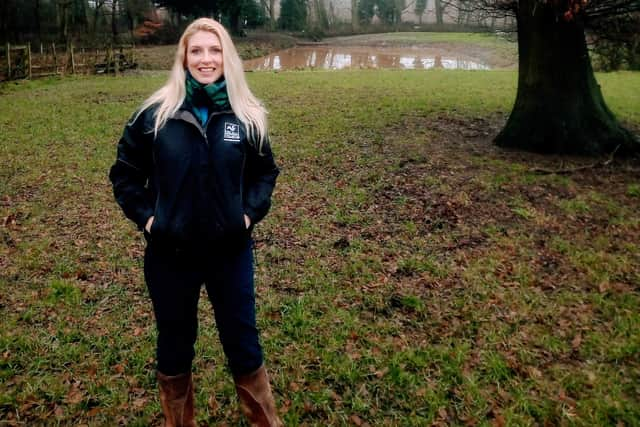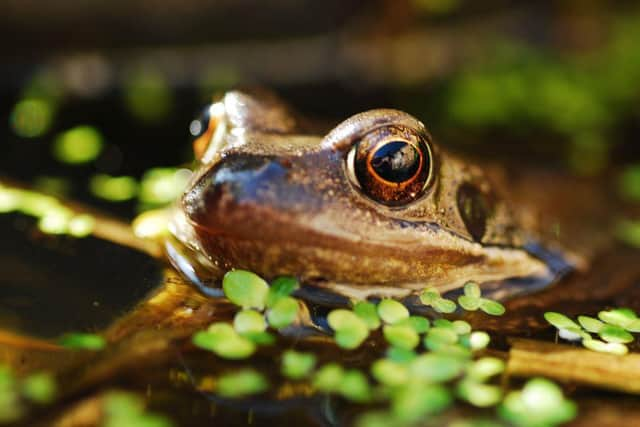Ambitious new projects aim to protect Nottinghamshire's wildlife
and live on Freeview channel 276
As one of the most nature-depleted countries on the planet, the UK can’t afford to be complacent.
Linking existing wildlife rich areas by establishing new habitats is key to creating the connectivity that is needed to secure nature’s recovery.
Advertisement
Hide AdAdvertisement
Hide AdAnd with 70 per cent of the land in Nottinghamshire being farmed, Nottinghamshire Wildlife Trust believes that it is essential to work with farmers to create and improve wildlife corridors and habitat connectivity.


A new farming and wildlife officer has been appointed to improve wildlife habitats across the county by the Nottinghamshire Wildlife Trust charity and is funded by its partner Severn Trent Water
Severn Trent’s Great Big Nature Boost fund aims to create and enhance Nottinghamshire’s natural habitats as part of the UK’s Nature Recovery Network.Funding, which is available to the county’s farmers via the new project, aims to create nature corridors through their farmland.
The biodiversity project, in conjunction with farmers and a new nature team, aims to create a range of habitats to connect existing areas of wildlife.
Advertisement
Hide AdAdvertisement
Hide AdThis includes the creation of new ponds, pond restoration, creating reed beds, watercourse improvements, creation of woodland, planting new hedgerows and hedgerow restoration, creating species-rich grassland, creating new wetlands, pollinator habitats and planting to provide wild bird feeding areas.


A series of small initiatives will also create important stepping stones for wildlife and the trust aims to provide tree sparrow nest boxes, owl boxes and feed hoppers for farmland birds.
Lisa Channing, the trust’s recently appointed farming and wildlife project officer, said: “As part of a local farming family with three generations, I am delighted to be able to collaborate across the farming and conservation sectors.
“We are linking important habitats for wildlife, including nature reserves, across farmland and other green spaces by creating wildlife corridors to help deliver The Wildlife Trust’s ambition to create 30 per cent of land supporting nature’s recovery by 2030, which is very exciting.
Advertisement
Hide AdAdvertisement
Hide Ad“We are facing climate and ecological crises and I look forward to making a positive impact by helping to create a positive legacy for the future of wildlife which people can enjoy and benefit from, including my own young family.”
Nottinghamshire Wildlife Trust hopes to deliver hundreds of hectares of enhanced and new habitats, 20 ponds, improvements along five kilometres of watercourse and a host of other features to benefit wildlife in four key parts of the county across 5000ha.
The farming and wildlife project officer will work with and support farmers and landowners, providing information on grants and funding streams available.
“ These may fund projects to safeguard against flooding, as well as helping to enhance biodiversity through planting, and could also include tree planting and pond creation.
Advertisement
Hide AdAdvertisement
Hide AdThe trust believes that the role will provide an important bridge between the needs of individual businesses and wider public interests and will also help to develop a better understanding of the challenges that face communities.
This is as we plan for the future needs of the environment and work to adapt and change in the face of the global climate and ecological crises.
Catchment management and biodiversity lead STW, Dr Jodie Retting, said: “We are delighted to be able to focus this funding on a specific industry with key aims for real results, hopefully leaving a real legacy for the future for both water quality and wildlife.”
Janice Bradley is head of nature recovery (north) at Nottinghamshire Wildlife Trust, and said: “There are four key areas we are working in within Nottinghamshire which are aligned with Idle Valley, the Sherwood Forest area and the Erewash Valley and South of Nottinghamshire.”
Advertisement
Hide AdAdvertisement
Hide AdShe added: “Having worked in these areas over a number of years, we hope this new initiative and focus working alongside farmers and providing funding for the habitat work, will produce practical solutions on the ground and contribute towards the ambition of a nature recovery network.”
This is a three-year partnership project between Nottinghamshire Wildlife Trust and Severn Trent, with the fund available to farmers and landowners within four target areas.
For further information for farmers in the areas, contact Lisa Channing by email on [email protected].
For further information about the work of Nottinghamshire Wildlife Trust, visit nottinghamshirewildlife.org website.